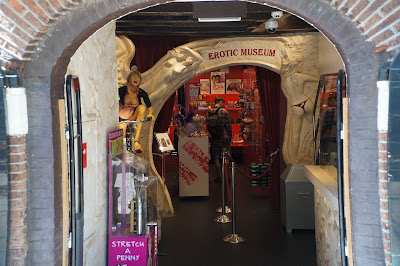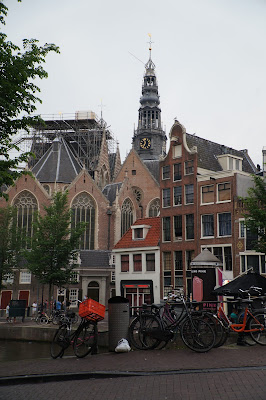The little town of Bay Bulls is not as attractive with the oil business dominating its harbor. A woman at a tour company told me how desperate Newfoundland was after the moratorium on cod came into effect around 1990. Those who could fled; those who stayed were almost desperate and they are damned glad for the oil companies that saved their economy. Now there is controlled cod fishing, she told me, sort of a populations study with special licenses. The catch is counted, evaluated, and the fisherman sells his catch locally. Thus Newfies don't have to import Icelandic cod for their fish and chips.
I chose the smallest of the tour companies to see the Witless Bay reserve. Only special permits let humans on the island so the rest of us have to go by boat. Its pretty rocky out there where the water meets the land and the water is choppy. On the island reserve there are birds everywhere and the rocks are decorated with white caps of guano. Puffins fly in and out of holes in the heavy sod and gulls hang around in hopes of snagging a young one should it emerge. Puffins are everyone's favorite bird, flying all around us with their stiff little wings and top-heavy bodies, belly-skipping atop the waves, then disappearing into the water only to come up somewhere else, hopefully with a meal in that big orange beak. On the water floated an alarming number of young gull bodies, the ones that didn't make it,.Another of the reserve's islands was covered with huge flocks of birds that I'm ashamed to admit I can't recall their species..
 |
| This photo is the best I could do in that choppy water. |
On the boat I met a Newfie woman who's fisherman father had twelve young mouths to feed. She told of how her family had looked forward to seal season. They hunted them, salted the meat that lasted all winter, ate flipper pie, used the oil and, in the end, her father made boots of the skin. I did not see any seals on that outing nor did I see a whale but on the way back to St. Johns I was lucky enough to see my first moose.
Quidi Vidi is another small fishing village a fairly easy walk from my hostel in St. Johns. Its small harbor holds the usual fishing stuff, a community center and a brewery that cranks out the local brew, Quidi Vidi Beer. Homes are modest and life goes on despite the constant flow of tourists.
A shared taxi service picked me up in St Johns along with several others here and there, delivered each rider to the proper destination then dropped me off to catch the ferry to Bell Island. This is how one gets around in Newfoundland without a car. I passed the coffee shop and cafe, opting to hike to the mining museum in town which is on the other side of the island and it didn't take long to regret it. I didn't go to the main business district, if there was one, but found the 'information center' indicated by a hand printed sign, consisting of two boxes, one of cheap copies of a 'visitor guide' and map, the other for money, and a gate with a dog behind it that aggressively guarded the front door.
Iron mines once supported Bell Island, huge underground operations that extended a fair distance under the ocean. The demand for iron has diminished though the ore is still plentiful. One mine is now a museum where one can don a hard hat, sign a waver and be led underground by a woman guide with a lively, amusing spiel. Nearby I found a carving in brick on the side of a small building, a tribute to the children who once worked in the mines.
I stopped at the cafe next to the lighthouse for a bowl of the most expensive seafood chowder ever but, oh, was it good. Fortified, I took the trail leading back to the ferry. It meandered, desolate and beautiful, along the clifftops, through grassy expanses decorated with wildflowers, into groves of short evergreens and finally to the ferry. An islander told me trees are short because the island flipped in some past geological era, its vegetation feeding the waters and new earth having to form on what had been its rocky bottom. I'm not falling for it but it makes a good story.






































































